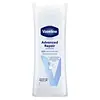What's inside
What's inside
 Benefits
Benefits

No benefits
 Concerns
Concerns

No concerns
 Ingredients Side-by-side
Ingredients Side-by-side

Water
Skin ConditioningGlycerin
HumectantStearic Acid
CleansingIsopropyl Palmitate
EmollientGlycol Stearate
EmollientPEG-100 Stearate
Dimethicone
EmollientParaffinum Liquidum
EmollientGlyceryl Stearate
EmollientPetrolatum
EmollientCetyl Alcohol
EmollientPhenoxyethanol
PreservativeMethylparaben
PreservativeAcrylates/C10-30 Alkyl Acrylate Crosspolymer
Emulsion StabilisingTriethanolamine
BufferingPropylparaben
PreservativeStearamide Amp
Disodium EDTA
Water, Glycerin, Stearic Acid, Isopropyl Palmitate, Glycol Stearate, PEG-100 Stearate, Dimethicone, Paraffinum Liquidum, Glyceryl Stearate, Petrolatum, Cetyl Alcohol, Phenoxyethanol, Methylparaben, Acrylates/C10-30 Alkyl Acrylate Crosspolymer, Triethanolamine, Propylparaben, Stearamide Amp, Disodium EDTA
 Reviews
Reviews

Ingredients Explained
These ingredients are found in both products.
Ingredients higher up in an ingredient list are typically present in a larger amount.
Petrolatum is more commonly known as petroleum jelly. It is created by mixing waxes and mineral oils.
This ingredient is effective at reducing water loss by 99%. This is because it is an occlusive. Occlusives create a hydrophobic barrier on the skin to prevent evaporation. This property makes it great for hydrating dry skin.
Pro tip: Use occlusives, such as this ingredient, on damp skin for the best results.
The quality or origin of petrolatum is only known when disclosed by the brand. Most cosmetic petrolatum has gone through several purification stages.
Another benefit of occlusives is it protects your skin against infection or allergies.
Petrolatum may not be safe for fungal-acne. Studies show mineral oil / petroleum leads to the growth of M. Furfur, a type of yeast.
Learn more about Petrolatum